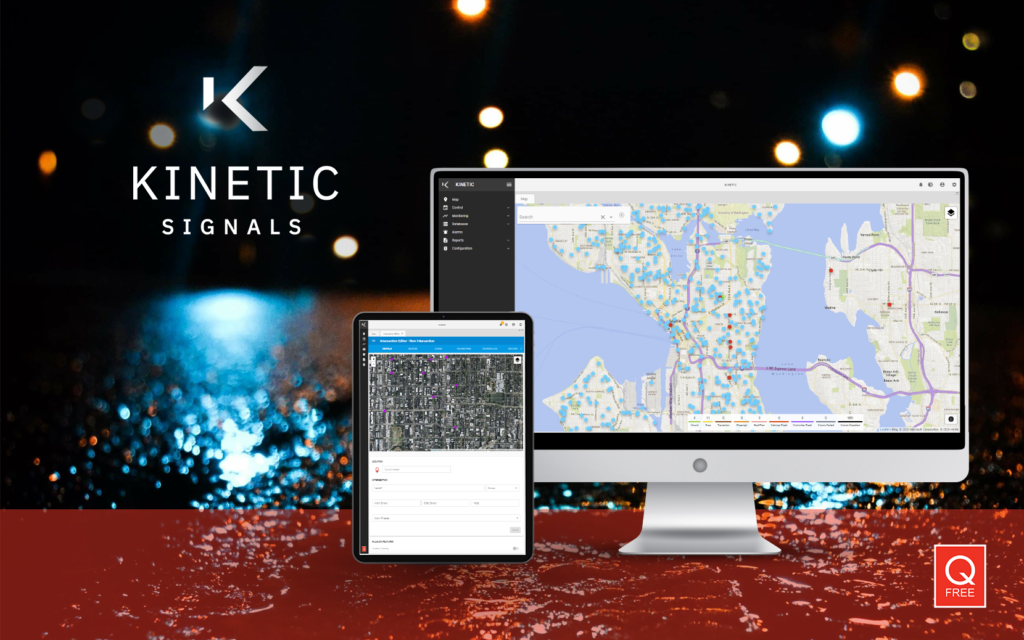Q-Free has announced the launch of Kinetic Signals, as the first module of its new single-interface Kinetic Mobility platform. The new signal management system features a comprehensive intersection editor, built-in ATSPMs, interactive reporting, and detail-rich database management
It was designed with the specific purpose to simply and efficiently monitor and control traffic signals and ITS operations in real-time across cities, regions, and states. Signals is the evolution and advancement of Q-Free’s celebrated Intelight Maxview ATMS.
Kinetic represents a generational leap ahead in the industry and changes the conversation according to Tom Stiles, Q-Free executive vice president of ATMS solutions. “This is about innovation and how we can do better for our customers by allowing them to use any piece of equipment, software, or application seamlessly and openly, including products from other vendors,” he says.
Kinetic Signals users can conveniently manage signalized intersections from an intuitive real-time map that provides highly detailed operations from device status to specific actions. One primary advantage lies in the new comprehensive, graphic-driven intersection editor that provides a holistic view of intersection operations by mapping elements such as: vehicle/multi-modal detector movements; signal heads; controller locations; and lane maneuvers.
Once created, intersection maps can be replicated for use across multiple applications including connected vehicle and adaptive signal control according to Himanshu Wad, technical sales lead and traffic engineer at Q-Free. “Kinetic Signals was designed with the user in mind, focusing on efficiency of resources and time as key components,” says Wad.

Among Signals’ other major features are the new interactive reporting elements tied with a database editor and management tools. The high-resolution data collection and reporting system includes automated traffic signal performance measures (ATSPMs) that retain and display a history of system events for use in monitoring operations, troubleshooting network issues and alerting operators to issues via toast notifications, audio alerts, emails, and texts per user configurations. Wad says, “Signals is an agency’s reporting dream, as you can visualize real-time graphical data and usage charts, and you’ve also got the built-in ability to perform trend analysis using ATSPMs.”
Signals also allows operators to track database changes based on users. It includes editor locks to prevent two people editing a database at the same time and allows database comparison, cloning, and archiving. Unlike most other systems, Signals comes with built-in database storage for draft and approved databases as well as ancillary signal files.
Kinetic Signals is the first module release of the Kinetic Mobility platform that was launched in mid-December. Kinetic Mobility will replace complicated and cumbersome standalone solutions with a single dashboard, providing an at-a-glance system overview that includes third-party devices and applications. The system is uniquely designed to run on the cloud or an agency’s server, which can later be migrated to the cloud with no loss of data, functionality, or down-time, depending upon need. Kinetic Mobility’s flexible procurement options allow for traditional licensing or software as a service (SaaS).
Leveraging a modern tech stack developed and used by tech giants, credit card companies, and streaming entertainment businesses, Kinetic Mobility will provide optimal performance for the future with universal features including live updates with no down-time, reporting with storage, scalable technology, and an open application programming interface (API) consistent with Q-Free’s dedication to open communication protocols and interoperability.





